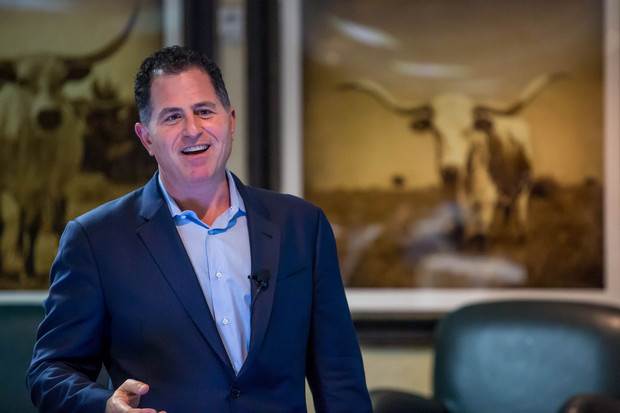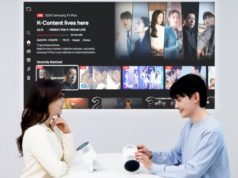In September, Dell and EMC finalized the largest ever merger of tech companies, creating privately held Dell Technologies – a “family” of companies that provides everything from PCs to hyperconverged infrastructure with annual revenue of some $75 billion. Ahead of next week’s Dell EMC World conference, CEO Michael Dell spoke with IDG Chief Content Officer John Gallant about what Dell and EMC customers can expect — in sales, service, product integration — from this landscape-altering combination.
The Dell/EMC merger is in stark contrast with rival Hewlett Packard’s earlier move to split into consumer- and enterprise-facing units. Dell dissected HP’s approach (smaller doesn’t necessarily mean more nimble) and talked about why getting bigger now is a better deal for customers. Also, with presidential hopefuls bantering about building walls and breaking trade deals, Dell warned about the dangers of protectionism and the risk of “mutually assured destruction” from limiting global trade.
There’s been a tremendous amount of coverage in the business and financial press about your merger with EMC. But let’s take the customer perspective here. Why does this merger make sense for customers?
If you step back and think about how the world is evolving, clearly from an infrastructure standpoint there are big things going on in terms of software defined, converged and hyperconverged. Bringing together the very best of the industry in servers, storage, virtualization [and] cloud software is allowing us to simplify the lives of our customers. The growth in public cloud and the interest in public cloud has largely been a function of bringing the workload up to the application level. That’s extrapolated a lot of the infrastructure into a much simpler, more manageable construct. It’s also the reason why converged and hyperconverged infrastructure are growing even faster than the public cloud, because they bring those same benefits in an on-premise and hybrid type environment. Bringing together Dell, EMC, VMware, Pivotal, we create a unique company in terms of scale and the ability to serve customers’ needs across existing IT and the IT of tomorrow. Our company is a leader in server, storage, virtualization, PCs, [has] very strong positions in the IT of tomorrow, digital transformation, software-defined data center, mobility, security. Customers are faced with two challenges. On the one hand, they need to embrace digital transformation. On the other hand, they need to modernize their infrastructure in order to pay for the digital transformation, because it’s not as if they’re given an extra budget to do digital transformation.
If you go back to 2001, Dell and EMC announced an alliance, and this is actually where this all began, interestingly enough. At the time we called it Dell EMC. It was very successful, grew very fast, got up to a couple billion dollars a year. If you look at VCE and what EMC, Cisco, VMware did, that was also very successful for a lot of the same reasons. Customers no longer want to integrate all these things themselves. By bringing together the very best of the industry into engineered, integrated solutions, we can more rapidly help our customers address the challenges and what they want to do in their infrastructure. I think the industry is consolidating and we’ve been a consolidator in compute and servers, now number one in server share globally. In PCs we’ve gained share for 15 quarters in a row. I believe scale matters and we’re at the stage of the industry where it’s consolidating.
The other question readers always have when they’ve worked with companies of this scale: How will you minimize the impact of this merger on customers? They’re worried about losing sales reps that they’ve worked with, channel partners that they’ve counted on. How do you address these concerns?
We spent a lot of time absolutely focused on how we maximize to combine the power of the companies and the customer-facing activities. The relationships that we have with customers are among the most important aspects of this in terms of how we ensure success. One of the things we found when we looked at the top 5,000 EMC customers and the top 5,000 Dell customers was that among those only about 1,000 were common. There’s actually very little overlap between the two, which tells us there are lots of cross-sell opportunities, but it [also] makes it a lot simpler in terms of avoiding churn and maintaining your relationships both with the Dell and EMC sales professionals and with our channel partners. We’re bringing the teams together in a way that’s [designed] to minimize churn. The thing we’ve heard time and time again from customers is they’re excited about doing more with a leading company that’s number one in everything all in one place. They don’t actually like to have more partners. You can look at our company and say — Okay, you’re leading in 20 or so areas across IT. You’re going to integrate those and build solutions. Well, let’s just take it as a thought experiment and say you were 20 companies. I haven’t seen any customer in the world that actually wants that. What I’m hearing from customers is they’re quite excited about doing more with us because we have created this market-leading, industry-leading company.
What should customers expect in terms of addressing product overlap and any potential impact on products they’ve already invested in?
I think we’ve got some good news there as well. When you look at Dell, EMC, VMware, you don’t have much overlap at all. This is one of the reasons why our alliance worked so well in the past and why we feel so strongly about the combination. If you look at the entry level or midrange of storage, that’s one potential area where somebody might see some overlap. But even as we looked at that, what we found is that the two different product lines serve different purposes. What customers would know as the EMC Unity or VNX product line and the Dell Compellent product line, both of those will continue. And of course, all the other product lines that EMC has in storage from VMAX to Isilon, Data Domain, XtremIO, DSSD, ECS, those will all continue.
The future for our readers is public and hybrid cloud. How does this merger make Dell and EMC stronger in those markets? What new and innovative things can people expect in the way of cloud offerings?
Well, cloud is not just a place. Cloud is a way of doing IT. Again, a little pattern recognition. If you go back to the mid 1990s where people were talking about the Internet, the questions were: What’s your Internet strategy? Where’s is your Internet product division? Where’s your vice president of the Internet? Where is all that now? Well, it turns out that the Internet is everywhere. It’s in everything, that’s just how we do stuff. We get it, it’s like oxygen. The cloud is actually like that, too. And this is why it’s a bit of a confounding topic, because cloud is not just a place, it’s a way of doing things. Within our family, of course, we have VMware, which has 500,000 customers who are all on this journey to some form of a private cloud, a hybrid cloud, a multi-cloud world where they’re connecting all these things together. We have Pivotal, a leading platform-as-a-service with Cloud Foundry, not only the Pivotal Cloud Foundry, but Cloud Foundry open source, which has been adopted by most of the leading companies in the industry. Then, of course, we have Dell EMC building the infrastructure for not only public clouds, but also private clouds and hybrid clouds and allowing customers to connect all this together. We have some incredible new technologies like [VMware] NSX for the virtualization of the network, which is tremendously important in terms of connecting these multiple clouds together and doing it in a secure and encrypted way. Across the family, we have tremendous capabilities. It spans from the largest companies in the world all the way down to — how do you build in a 2u server, a hyperconverged platform that is essentially a cloud in the box? I think you know that’s one of the fastest growing areas of the company. With our VMware hypervisor technology, our VSAN virtual storage, our ScaleIO technology, we have the leading hypervisor and the leading software-defined storage, and of course we’re number one in servers. We’re well positioned across all the various use cases. And an interesting perspective on this, we’ve been selling infrastructure to the public clouds for years, billions of dollars of equipment to most, if not all, of the public clouds. The big difference in what those companies are doing, it’s not in the hardware. It’s in the software, it brings the workload up to the application level. And that idea is not unique to the public cloud. It can be done in service providers, it can be done in software-as-a-service, it can be done in individual companies. This is where the whole converged and hyperconverged is growing so fast.
The other big issue is people moving workloads to the public cloud, to Amazon and other platforms. We have Amazon, Microsoft, Google, IBM, even Oracle at their recent conference, really ramping up those platform efforts. Will Dell be offering infrastructure-as-a-service? Will you be offering platform-as-a-service?
We have the Virtustream public cloud, which I would not position as a public cloud to compete on all workloads. Virtustream is very focused on mission-critical, tier 1 applications like SAP, for example. For large organizations. We support our customers having a multi-cloud environment and connecting all those things together is a non-trivial task. That’s where a lot of the work that VMware has done, Dell EMC has done, in creating these hybrid cloud offerings. You’ll see an announcement here very shortly from VMware and AWS [who] are working together to be able to extend out the VMware environment into additional public clouds, including AWS.
It sounds like the goal is to be the best hybrid cloud onramp…







